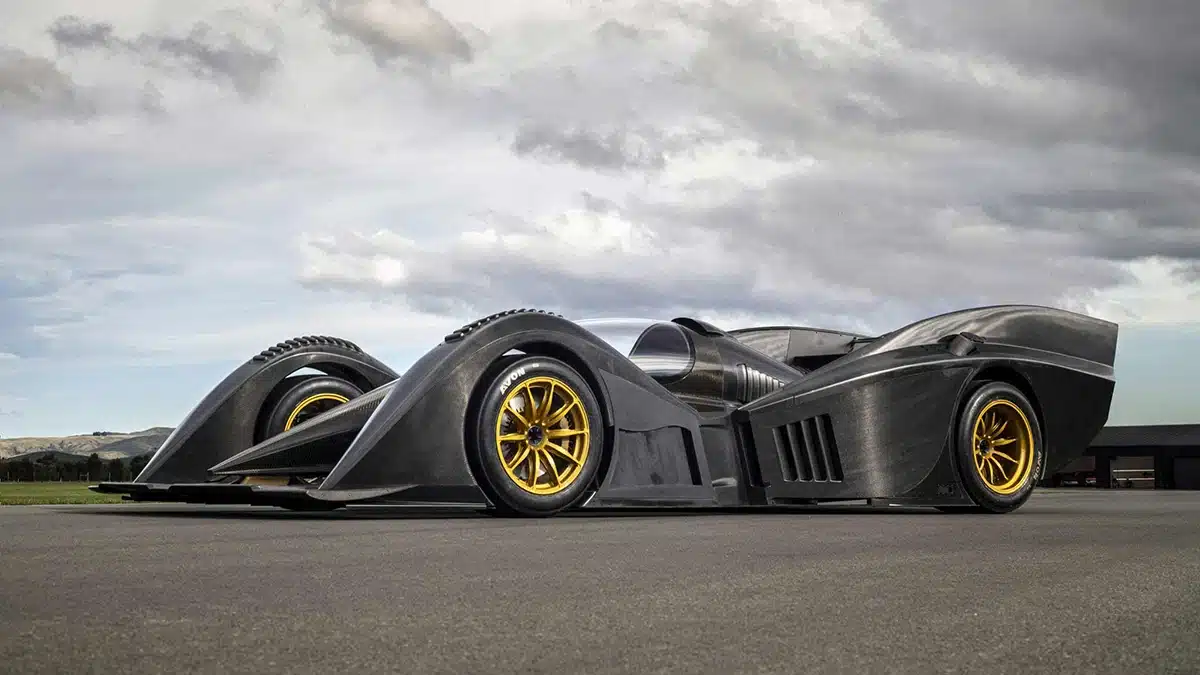“Ford’s been making championship-winning rally cars under the RS Badge for decades, and street cars to match,” says race car driver Ken Block on Ford’s promotional YouTube video for the new 2016 Ford Focus RS, an all-wheel drive turbo street car.

The new Ford Focus RS has been making a lot of noise on the commercial market, with orders streaming in for the model without test drives or a close-up look at the car.
Buyers have been clamouring for the chance to get their hands on the latest model to carry the RS badge, which will officially come on to the market this spring. We’re going to take a look back at the evolution of the cars that have carried the RS badge and seen this leg of Ford manufacturing reach such a high level of demand.
Originally, the Ford TeamRS was solely for the company’s car and motorsport division, with the RS badge standing for Rallye Sport. Although it’s argued that the Ford P7, Ford 20M and Ford 26M have some claim to the RS name, the first model that’s agreed to have started the range was the Ford Escort RS1600.
The RS1600 was an evolution of the Escort Twin Cam, which was built for international rallying. However, the RS1600 was built at Ford’s Advanced Vehicle Operations in South Essex and featured a higher performance engine and sports suspension.
Although the model had strengthened materials to make it a safe rally competitor, the RS1600 was known for being temperamental and was later replaced with the RS2000, which had a turbocharged 1.8-litre engine.
The RS2000 racked up an impressive amount of rally and racing victories and it has been said that this particular model pre-empted the hot hatch market, as it was a high-performance, but affordable road car. In terms of its performance it boasted an output of 250bhp, which could be expanded to between 250 and 450bhp when it was in race form. Fitted with four-wheel drive, it competed against the Audi quattro and Peugeot 205 T16 on the rally stages.
The Ford Escort carried the RS badge through several variants until in 1985 the Ford Sierra RS Cosworth came on to the market.
This model was the result of a Ford Motorsport project with the aim of creating a model that would win in Group A racing in Europe. The model brought the Ford name eight wins in Group A between 1993 and 1996 and it had two more as a World Rally Championship (WRC) car between 1997 and 1998. It was powered by a 227bhp 2.0-litre Cosworth tuned engine with a Garrett turbocharger and was capable of a top speed of 147mph.
Although it’s no longer in production, fans of the RS range affectionately refer to the Ford Escort RS Cosworth as the “Cossie“.
Launched in 2002, the Ford Focus RS Mk1 was the first Blue Oval car to wear the RS badge after the Escort RS Cosworth left the market. This model was only available on a limited run for one year and powering the model was a 2.0-litre 16-valve Duratec engine that produced 212bhp and a top speed of 144mph.
A real looker, the 2002 Ford Focus RS Mk1 had an impressive body kit with 18-inch O.Z. alloys and Sparco race-style seats throughout the interior. The inside of the car was also wrapped in a blue-black trim to match the exclusive blue colour of the exterior.
Both the Ford Focus RS Mk1 and Mk2 models featured front-wheel drive layout, with the latter coming on to the road in 2009. However, the Mk2 featured a Volvo-sourced 2.5-litre Duratec engine that was also found in the 225bhp Ford Focus ST. Tweaks were made to the engine and the Mk2 Ford Focus RS produced a massive 301bhp, which saw it do the 0-62mph sprint in 5.9 seconds and hit a top speed of 163 mph.
These figures saw this road-going car on the same level of performance as the RS WRC manufacturers’ titles in 2006 and 2007.
All of these variants lead up to the much-anticipated 2016 Ford Focus RS model, a high-performance hatchback that benefits from new and advanced technology. The new model will have all-wheel drive with Dynamic Torque vectoring, which hopes to see the car become a class-leader in cornering speed. It is also the first RS to come with Drive modes, including an industry-first Drift Mode. Drivers will also enjoy the most powerful RS brake system with Brembo front callipers that are racing car standard.
Aesthetically, the model looks like a supercar with a flared nose and strong rear spoiler, but the styling has been toned down for this variant of the RS, making it more suitable for the road. But what of the engine? This new model boasts the best performance of any of the RS road cars before it with a 2.3-litre EcoBoost unit with 345bhp, maximum torque of 44Nm, a 0-62mph sprint of 4.7 seconds and a maximum speed of 165mph.
Don’t forget to share this with your friends on Facebook & Twitter! Share links below:
For more articles like this, receive our weekly e-newsletter, including partner deals and all things motoring, register your email below.
Please note: You cannot subscribe to Smart-Motoring unless you put a tick in the checkbox below to indicate have read and agreed to our privacy policy.


















Leave a Reply
You must be logged in to post a comment.